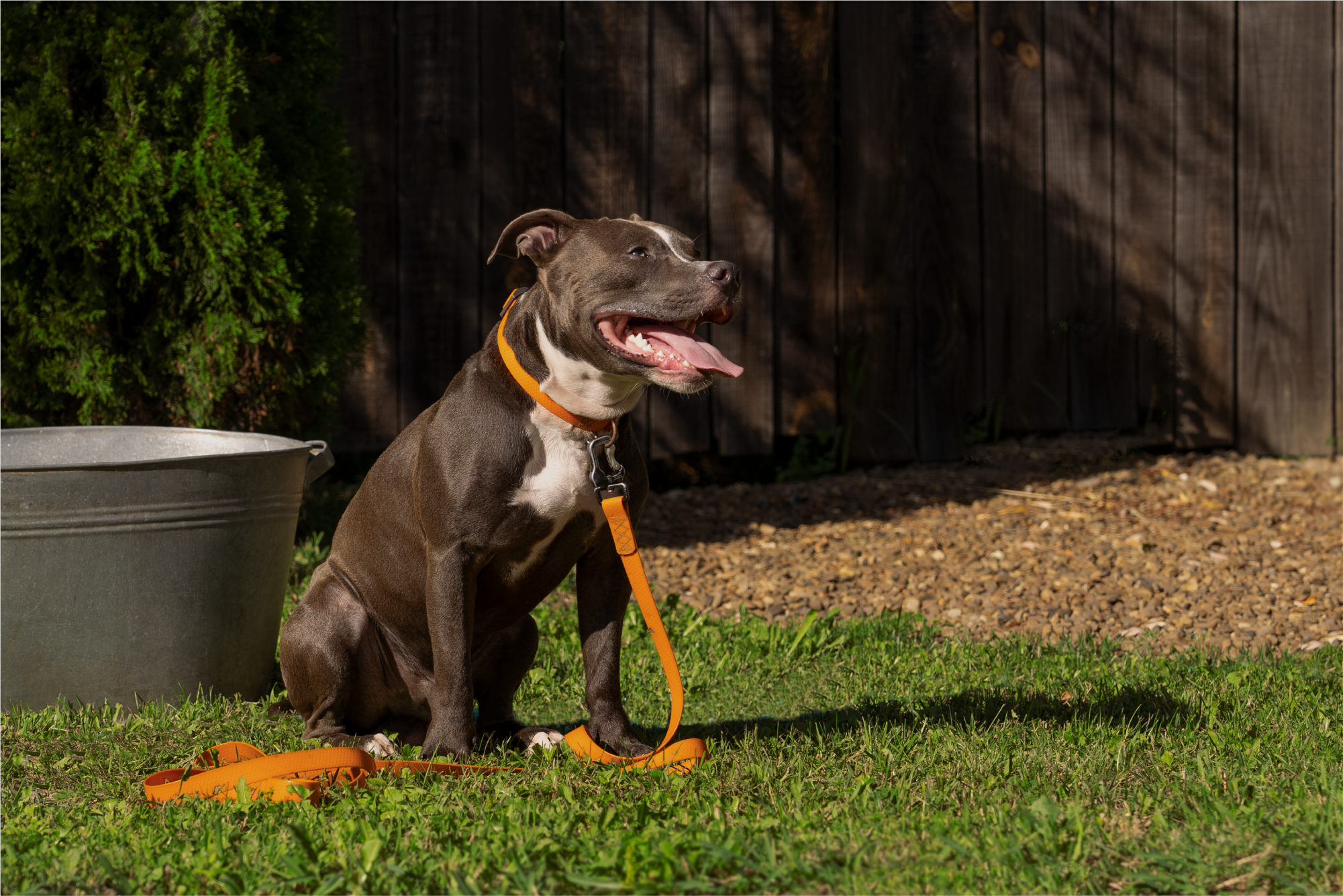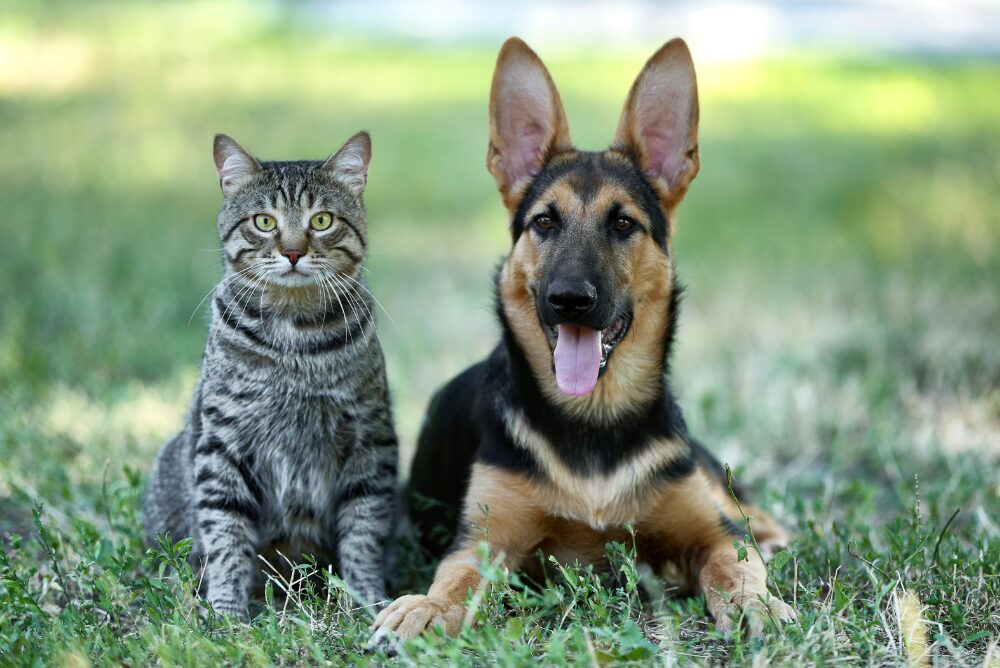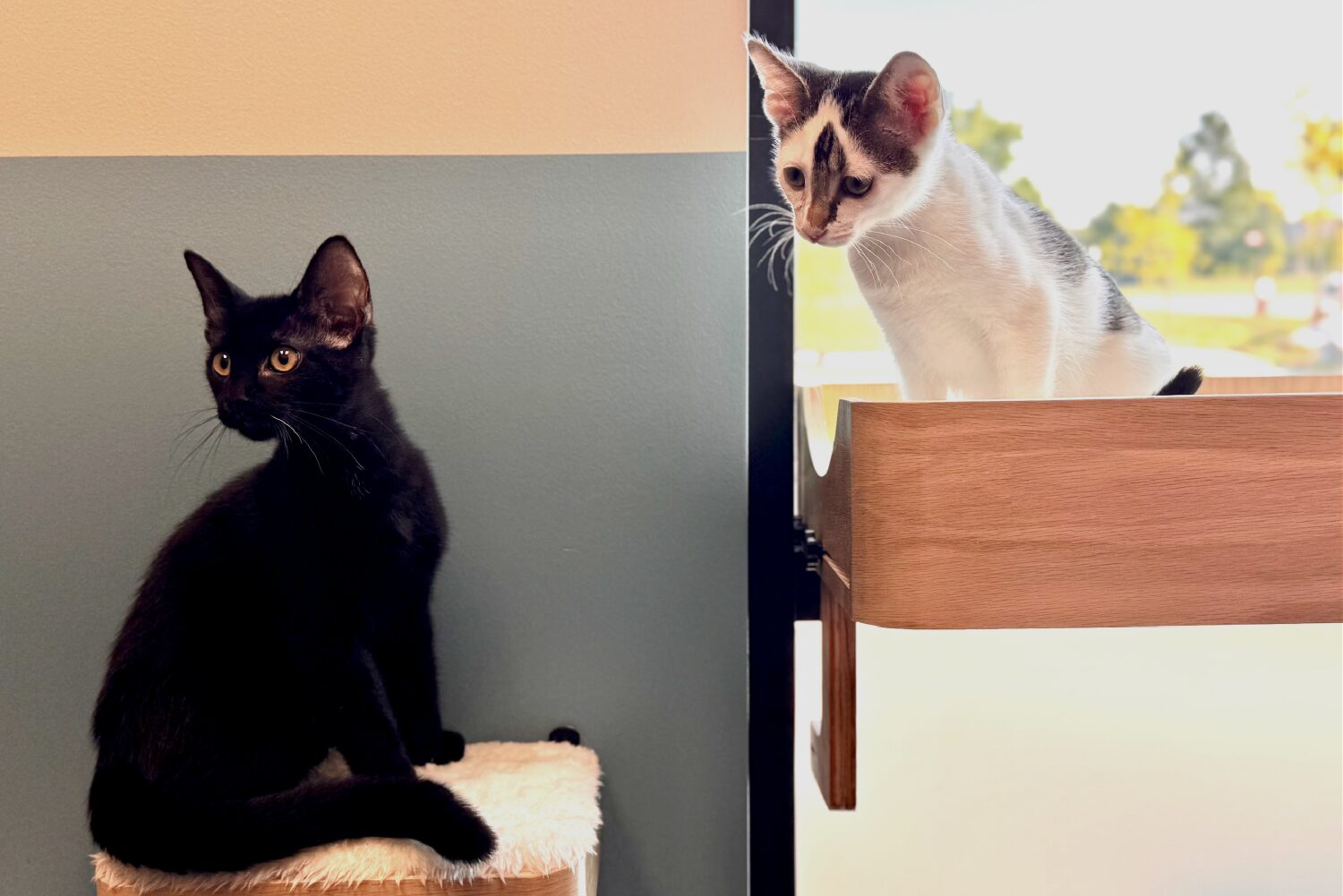When the temperature starts to climb, your pet’s health could be at risk, even if you’re just heading outside for a quick walk or are indoors without air conditioning. Dogs and cats are much more sensitive to heat than we are, and even short exposure to high temperatures can quickly lead to overheating.
Knowing the early signs of heat stress and how to respond can help you act fast and prevent a serious emergency.
Heatstroke in Cats
A cat is considered to be in heatstroke once their body temperature exceeds 104°F. The earlier stage, heat exhaustion, typically begins between 103 and 104°F and can serve as a critical warning sign if caught in time.
Early Signs of Heat Exhaustion:
- Panting or drooling
- Sweaty paw pads
- Increased grooming to cool down
- Drinking more than usual
- Seeking out cool spots like tile floors or shady corners
If your cat shows these signs, do not wait. Move them into an air-conditioned or shaded space, offer fresh cold water, and gently place a damp, cool towel along their back. From there, contact your veterinarian right away, even if they appear to improve.
If the situation progresses into full heatstroke, symptoms become more severe.
Signs of Heatstroke in Cats:
- Disorientation or stumbling
- Bright red or bruised-looking gums
- Vomiting or diarrhea, sometimes with blood
- Wheezing or labored breathing
- Seizures or collapse
- Body temperature over 104°F
Cats most at risk include:
- Flat-faced (brachycephalic) breeds
- Senior cats, obese cats, and kittens under 4 months old
- Cats with chronic conditions like kidney disease or diabetes
- Indoor cats exposed to outdoor heat
- Any cat left in a parked car or closed room without air conditioning
Heatstroke in Dogs
Dogs often show signs of heatstroke earlier than cats. Initially, a dog may experience heat cramps, which are muscle spasms caused by dehydration. If they continue to exert themselves, they may become weak, nauseated, or confused, entering the heat exhaustion phase.
Warning Signs to Watch For:
- Heavy panting and drooling
- Fast heart rate
- Fatigue, stumbling, or confusion
- Vomiting or diarrhea
- Body temperature over 104°F
Heatstroke in dogs often results from two avoidable situations:
- Being left in a parked car, even for a few minutes
- Exercising in hot, humid weather without adequate water or shade
Next Steps
If you suspect your pet is experiencing heatstroke, your first step should be to call your veterinarian or the nearest emergency clinic. Your vet will guide you on how to begin cooling your pet while you prepare for transport. This may include:
- Move your pet to a cool, shaded, or air-conditioned area
- Wet their body with cool (not cold) water, or place a damp towel on them
- Offer fresh water if they are alert, but do not force them to drink
Acting quickly can help prevent serious complications such as brain damage, organ failure, or death.
Awareness Is Key
Heatstroke can escalate in minutes, but it is often preventable. Avoid outdoor play during peak heat, ensure constant access to fresh water, and never leave pets in cars or enclosed areas without ventilation. Reach out to your veterinarian or an emergency clinic as soon as you notice any signs of heat related illness.
At Faithful Friends Veterinary Clinic and Cat Specialty Center, we are here to help you navigate every season safely. If you have questions or need urgent advice, call us at 614-389-0997.




